After the terrorist attacks that rocked Colombo, Sri Lankan creatives shaped an arts-driven recovery that could become a template for a post-Covid-19 world…
Over glossy Beijing duck and tiger prawn kung pao at the Shangri-La Hotel’s Shang Palace, Ajai Vir Singh is explaining how the arts community led Sri Lanka’s recovery after the Easter 2019 terrorist shake-up.
Singh is the architect of Celebrate Colombo, which in August 2019, four months after the bombings of several churches and luxury hotels, pulled together artists, photographers, filmmakers, restaurateurs and musicians for an eight-day festival aimed at bringing locals out of a deep funk.
“When you are emotionally numb and fear has taken over, there is no creative thinking,” says Singh. “The effect on society was debilitating. You couldn’t go anywhere without looking to see if the person next to you was carrying a backpack. No-one in Colombo was going out.
“The only thing was to create something big enough to motivate people, to remind them what a vibrant, creative city Colombo is.”
It’s no good just telling people things will be all right, adds Singh; you must demonstrate peace.
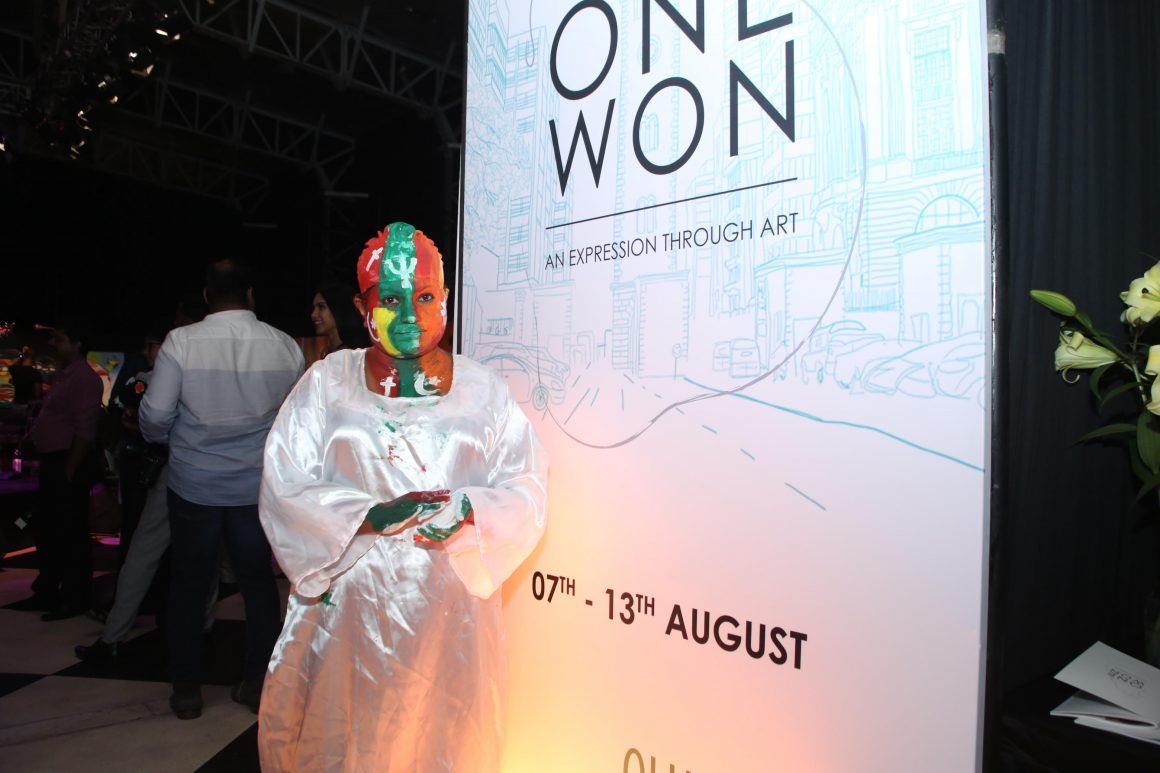
Forty artists contributed to One Won, a mixed media free-for-all
The spirit of Sri Lanka was the focus of Celebrate Colombo, its thematic by-products division, power, hierarchy and healing. Forty Sri Lankan artists, of various ethnicities and religions, contributed to an exhibition called One Won, one canvas in 40 parts. It was a mixed-media free-for-all using everything from steel chains and gold leaf to watercolours, pointillism and postcards.
Part of the one million rupees (more than A$8000) raised from sales generated by the exhibition supported the physiotherapy unit of the Batticaloa Base Hospital in the east of the country where those injured in the explosions on April 21 were receiving treatment. The death toll was 235, with as many as 500 injured.
For the event, seven young filmmakers were each matched to a fashion designer to create one-minute film clips. Celebrity photographer Jatin Kampani presented a black and white photo essay called “The Dandelions of Colombo”, named for the plant that blooms in the most unassuming places yet offers a big puff of promise. Shot on a phone camera, it captured the beauty of religious sites, cultural icons and the city’s new and old places.
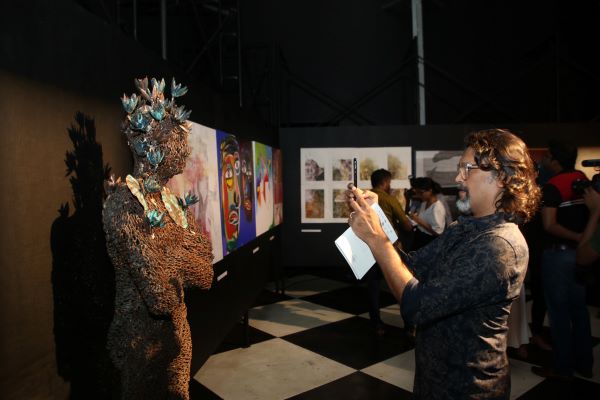
Photographer Jatin Kampani at Celebrate Colombo
Curated music events included salsa dancing and performances by Funky Loops, Amarsha Tissera, Lasith Fernando and DJ Clifford Issac, collaborating with up-and-coming vocalists.
The first night, 200 people turned up – “We hadn’t seen that many people out and about for months,” says Singh. By the end of the eight days, attendance had reached 22,000.
Creative risk
It was the kind of calculated risk Ajai Vir Singh is used to making. As founder and managing director of Colombo Fashion Week and its offspring Swim Week Colombo, he has been working since 2003 to establish Sri Lankan fashion as a university discipline and an industry with a reputation for cool designs, exceptional swimwear, and responsible production practices.
At the time of the attacks, tourism was the country’s third largest earner, contributing US$4.4 billion annually. Sri Lanka had been named by Lonely Planet as the number one country for travel in 2019. The month after the bombings, visitor arrivals had dropped by 71%, but according to a November International Monetary Fund report, the decline had moderated to 27% by the end of September. Arrival numbers, according to the report, were (before the coronavirus), expected to fully recover this year.
Celebrate Colombo was a hit. Locals clamoured for more, retailers asked to be involved, and the Ministry of Tourism told Singh to plan the next one.
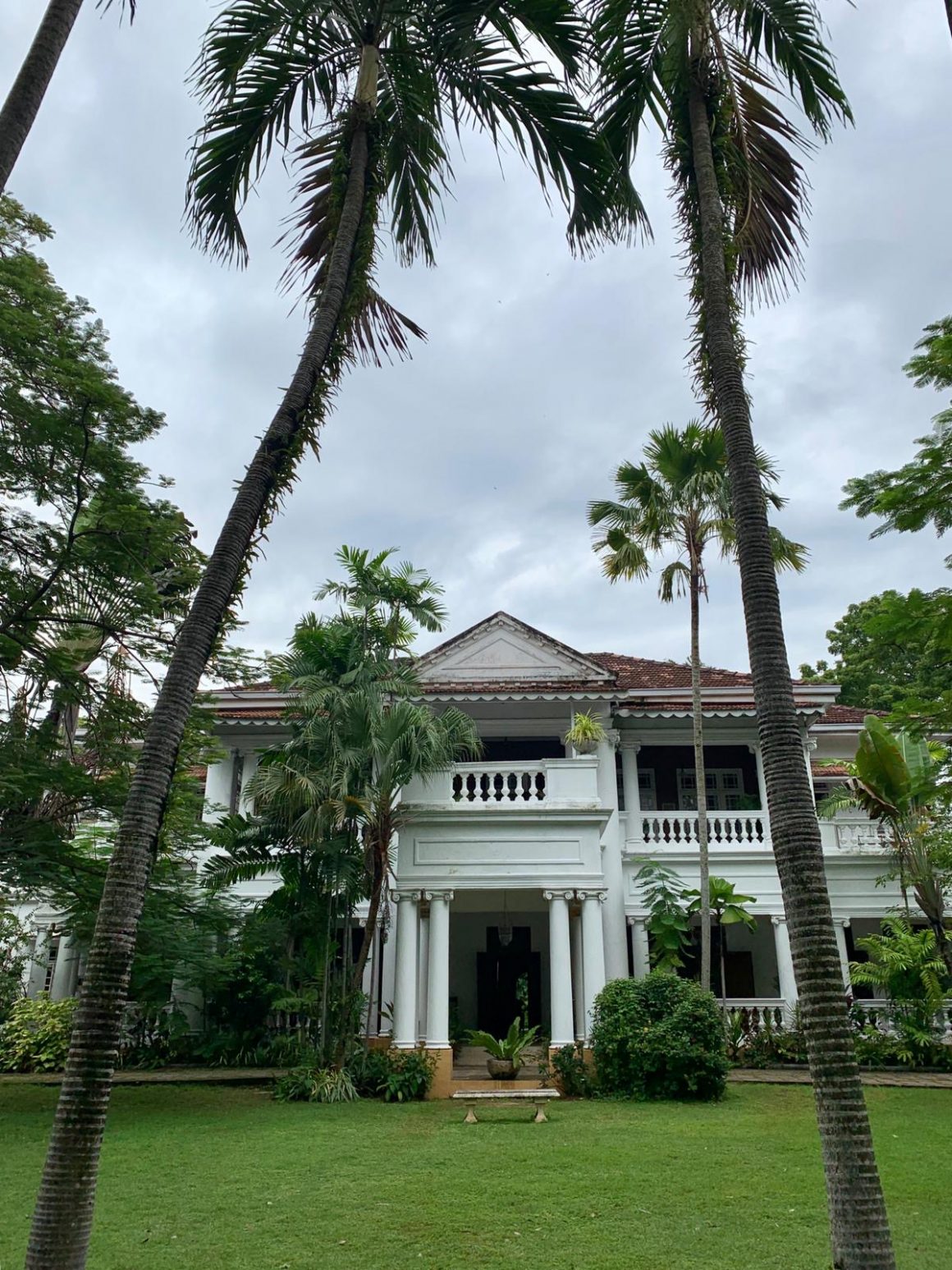
The colonial residence of Sri Lankan author Ashok Ferrey
Book learning
In the heart of the city, in a white colonial mansion that used to be the Pakistani Embassy and has been a film set for more than a dozen movies, Ashok Ferrey is dispensing a forensic analysis of what makes Sri Lankans so resilient, with the irreverence you’d expect from one of the country’s best-known fiction writers and a stalwart of the annual Galle Literary Festival which took shape in his dining room in 2005.
Ferrey is one of a new generation of Sri Lankan authors writing in English; he has twice been shortlisted for the Gratiaen Prize, Sri Lanka’s premier literary award, with two of his six books, Colpetty People and The Good Little Ceylonese Girl. His 2017 book, The Ceaseless Chatter of Demons, was longlisted for the DSC Prize for South Asian Literature.

Ferrey’s house is popular with film-makers, featuring in more than a dozen films
In blue jeans, black T-shirt, thongs and a G-Shock watch, Ferrey (also a builder, mathematician and personal trainer) declares, “We are all very quarrelsome by nature. Disagreeing with someone is not only socially appropriate but it is encouraged. Things can get quite controversial and violent, it’s a very feisty culture.
“But our foolhardiness is also our bravery. Sri Lankans are used to surviving under adverse conditions.”
The civil war that, between 1983 and 2009, pitted the Tamils against the Sinhalese, feels, he says, like a long time ago. “We have learnt to turn the page and move on; it’s all about survival.”
In his writing, Ferrey portrays the idiosyncrasies of Sri Lankan life in a way that no travel brochure can – its humour, simmering resentments, what he calls “a gold-medal-winning” passive aggressiveness, and a tango with truth.
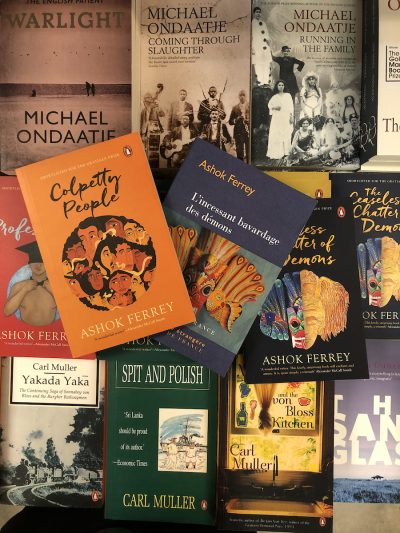
Sri Lankan writers in their element at Barefoot, Colombo
There is, Ferrey says, no simple narrative, “even though politicians want us to be cast from the one mould – India Lite, if you like … We have so many groups and sub-groups, things are much more cosmopolitan here than politicians would have us believe.”
* This post may contain affiliate links. Excess All Areas may receive a small commission, at no cost to readers, if a purchase is made
Other writers who explore the country’s history and humanity include Carl Muller, Nayomi Munaweera, Romesh Gunesekera, Ru Freeman and Shyam Selvadurai, whose work can be found at Barefoot (704 Galle Road), a microcosm of Sri Lanka, selling art, textiles, books and food.
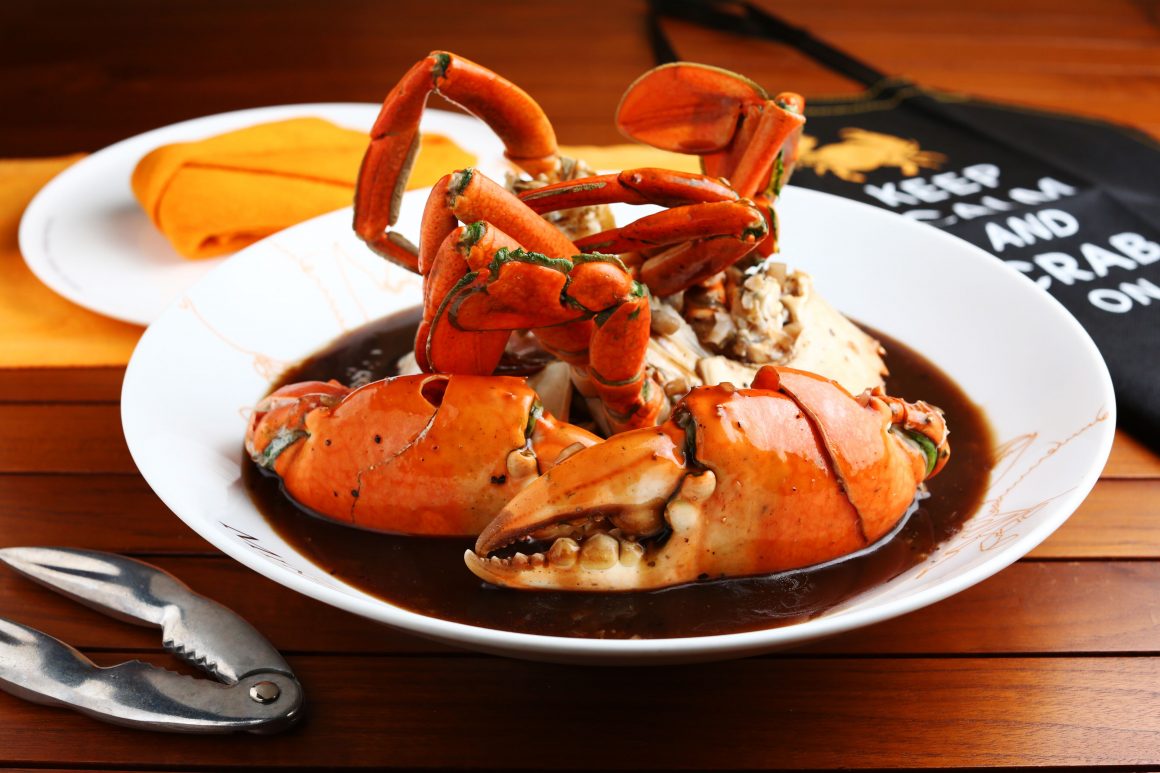
Crabzilla: Dharshan Munidasa’s signature mudcrab
How crab will save the world
Dharshan Munidasa is one of Sri Lanka’s best-known restaurateurs. His eateries include Nihonbashi and Ministry of Crab, which have both appeared on the Asia’s 50 Best Restaurants list, and the newer Kaema Sutra.
The chef joins us after a long day’s filming, looking impeccable in a crisp, pressed, white shirt with the names of his restaurants embroidered on one sleeve.
We’re talking chilli crab, over which he claims native title. Singapore, he declares, appropriated it. To get the best of Sri Lanka’s crabs for a long time you had to fly to Singapore. He decided to change that, setting up Ministry of Crab in Colombo’s Old Dutch Hospital precinct in 2011 and offering crab several ways – pepper crab, chilli crab, curry crab, a chilled butter crab and crab cooked in Italian olive oil, chilli, garlic and – with a nod to his part-Japanese heritage – a splash of soy sauce at the end. The Crabzilla option weighs in at 2 kilos and will lighten the wallet by $324.
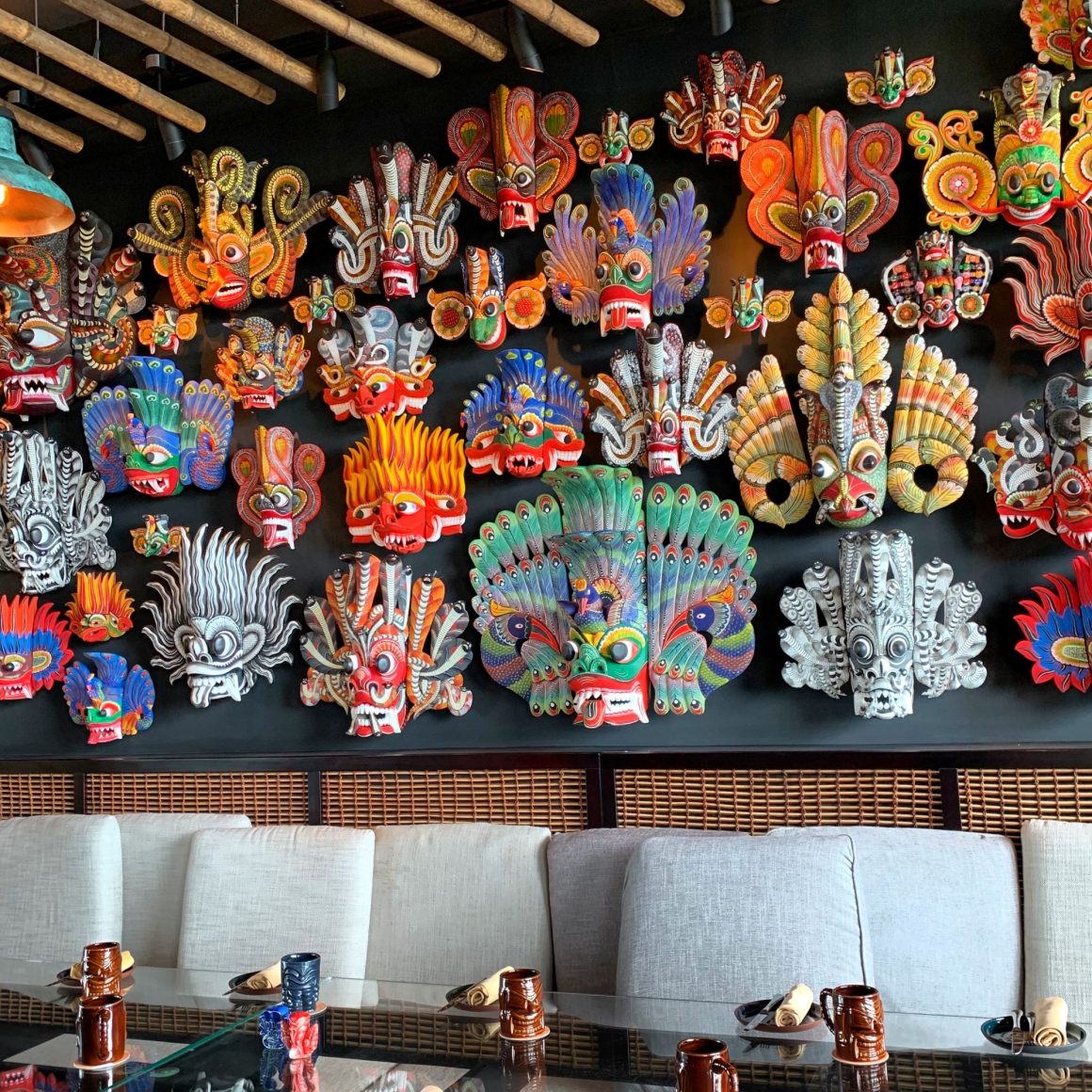
Masking up at the Shangri-La’s colourful Kaema Sutra
Earlier in the day, in the atmospheric Kaema Sutra, with its wall of vibrant ceremonial masks, we sample key Sri Lankan dishes. There’s kottu, roti bread chopped up with noisy, military precision; lamprais, a steamed banana leaf packet of meat, rice and chilli sambal; and the star attraction – tuna ambulthiyal, fish curry using sashimi-grade tuna made sour with a stock from the goraka fruit.
Munidasa has long flown the flag for Sri Lankan food. He has attended food summits and created special menus in such diverse cities as Taipei, Sydney, Singapore, London, Bangkok. Ministry of Crab entered 2020 with restaurants in Shanghai, Manila, Mumbi and the Maldives.
What’s unique about Sri Lankan food? “The tuna ambulthiyal would be the most unique,” he says. “Tuna is a tradition. Our spices are not unique, but it’s how we mix and use them that is. Our curries are light.”
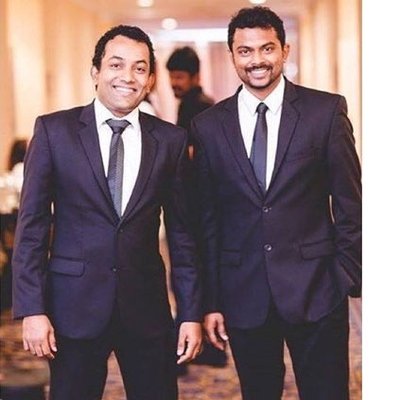
Bathiya Jayakody and Santhush Weeraman, the pop duo known as BNS, who gave Sri Lanka a “sound”
The sound of Sri Lanka
At Sydney’s Macquarie University in the 1990s, it really bothered marketing student Santhush Weeraman that Sri Lanka had no recognisable “sound”. At the university’s International Day, everyone came to the Sri Lankan tent for the food but drifted away to other tents when it was time for a music showcase.
Back in Colombo, he formed, with Bathiya Jayakody, the pop duo that came to be known as BNS. They would use Sinhala, Tamil, English, and even Hindi lyrics in their songs.
Says Weeraman, “Using sitar, an orchestra, drum and bass, didgeridoo was all very fresh to Sri Lanka. It was a cultural shift in sound, and there was at first strong resistance.”
“Two languages mixed the way we did was unheard of,” adds Jayakody, “as was wearing jeans and a T-shirt on stage. But we created a sound that became a big trend, a revolution, a cult … What you saw happening [in the West] in the 1960s was happening in Sri Lanka in the late ’90s. At one stage people were banned from listening to us!”
Their mashup of rap, melodic pop and folk appeals to a cross-section of music lovers both in their own country and abroad.
The industry standard
In their quest for a global sound that can be identified as Sri Lankan, BNS has become the backbone of the country’s music industry, establishing record labels, events and management sidelines, video, audio and TV production houses, lighting and sound companies.
Given the way 2020 shifted on its axis soon after our breakfast of dumplings and hoppers, Weeraman’s sense of the state of play was almost globally prescient. “It feels to us like a paradigm shift. We are coming out of a dark period. But more solutions are required to find harmony. Sri Lanka needs global food, fashion and music … a global spirit.”
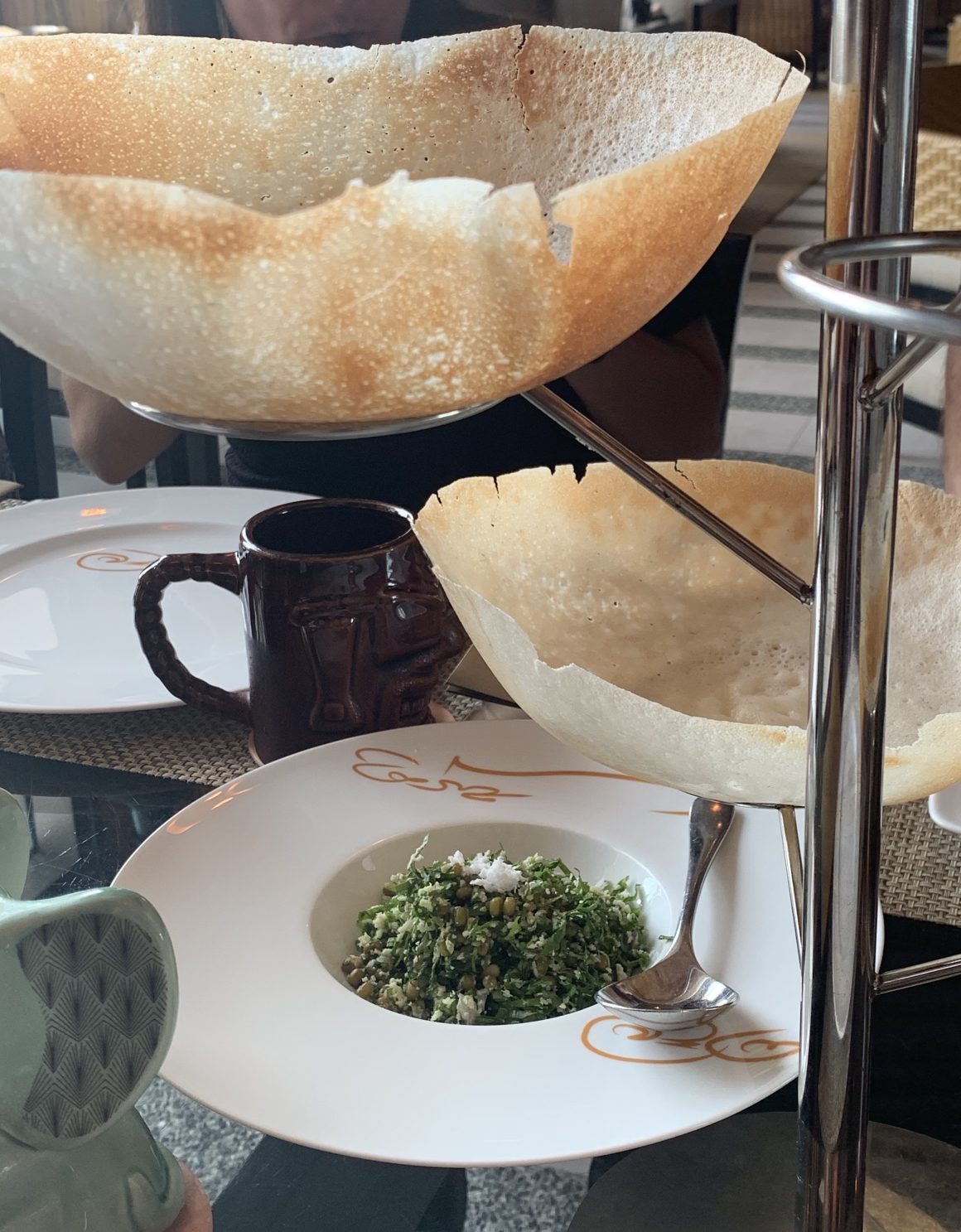
Sri Lanka’s signature multi-purpose dish: hoppers
Photography: Susan Skelly and supplied (Celebrate Colombo, BNS)







'Colombo’s boost juice | An arts-led recovery | Creatives call the shots' has no comments
Be the first to comment this post!